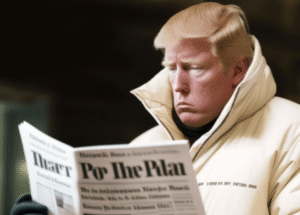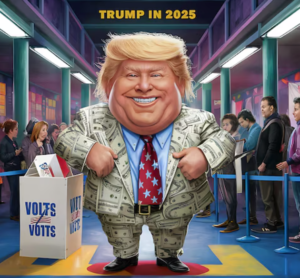$DIA $SPY $USD
#Trump #Tariffs #TradeWar #StockMarket #Investing #Economy #WallStreet #FinanceNews #Greenland #USD #GlobalTrade #Markets
Former President Donald Trump delivered a defiant speech cautioning that his proposed tariffs could create “a little disturbance” in the global economy while reiterating his commitment to imposing levies on America’s trading partners. His remarks, made before Congress, underscored his long-standing protectionist stance, which aims to reduce the U.S. trade deficit and push domestic manufacturing. However, market analysts warn that such tariffs could spark retaliatory measures from key trading partners, disrupting global supply chains and pressuring corporate profit margins. Investors reacted cautiously to the renewed trade rhetoric, as previous tariff implementations during his administration led to fluctuations in equities and commodities markets. Major indices like the $DIA and $SPY showed signs of hesitation, while the dollar $USD edged higher sharply as investors weighed the potential economic disruptions.
Trump also reignited his controversial ambition to acquire Greenland, an idea he first floated during his presidency. While Denmark, which governs Greenland, has consistently rejected any possibility of a sale, Trump insisted he would “get” Greenland, portraying the resource-rich territory as a strategic asset for the U.S. The comment drew skepticism from financial analysts, as such an acquisition would require vast diplomatic and economic negotiations. However, Greenland’s reserves of rare earth elements, crucial for technology and defense, remain a point of interest for global superpowers, including China. Investors in commodities and mining-related stocks took note of Trump’s renewed focus on Greenland, speculating whether renewed geopolitical interest in the Arctic could drive investment in rare-earth mining and production.
Financial markets remain sensitive to Trump’s trade stance, particularly given the impact of tariffs on inflation and interest rates. Traders recall that previous tariff announcements during his tenure contributed to market volatility, particularly in manufacturing, agriculture, and tech sectors. Companies relying on global supply chains, particularly those with heavy exposure to Chinese manufacturing, could face increased costs should Trump implement another round of tariffs. The Federal Reserve would also need to navigate the potential inflationary effects of such policies, influencing future monetary policy decisions and interest rate trajectories. While some investors anticipate that protectionist measures might benefit domestic producers, others fear reduced economic efficiency and retaliatory tariffs from trade partners, which could stifle growth.
Global markets, particularly in Asia and Europe, also reacted to Trump’s pronouncements, as renewed uncertainty about the direction of U.S. trade policy threatens multinational corporations and foreign economies. Emerging markets with significant trade ties to the United States could experience capital outflows as investors brace for potential supply chain disruptions. The continued strength of the U.S. dollar $USD amid risk aversion could also impact foreign debt markets and global commodity prices. While financial markets remain in wait-and-see mode, analysts expect heightened volatility in the weeks ahead as investors assess the likelihood of Trump’s policies being enacted and their implications on economic growth and corporate performance.







Comments are closed.